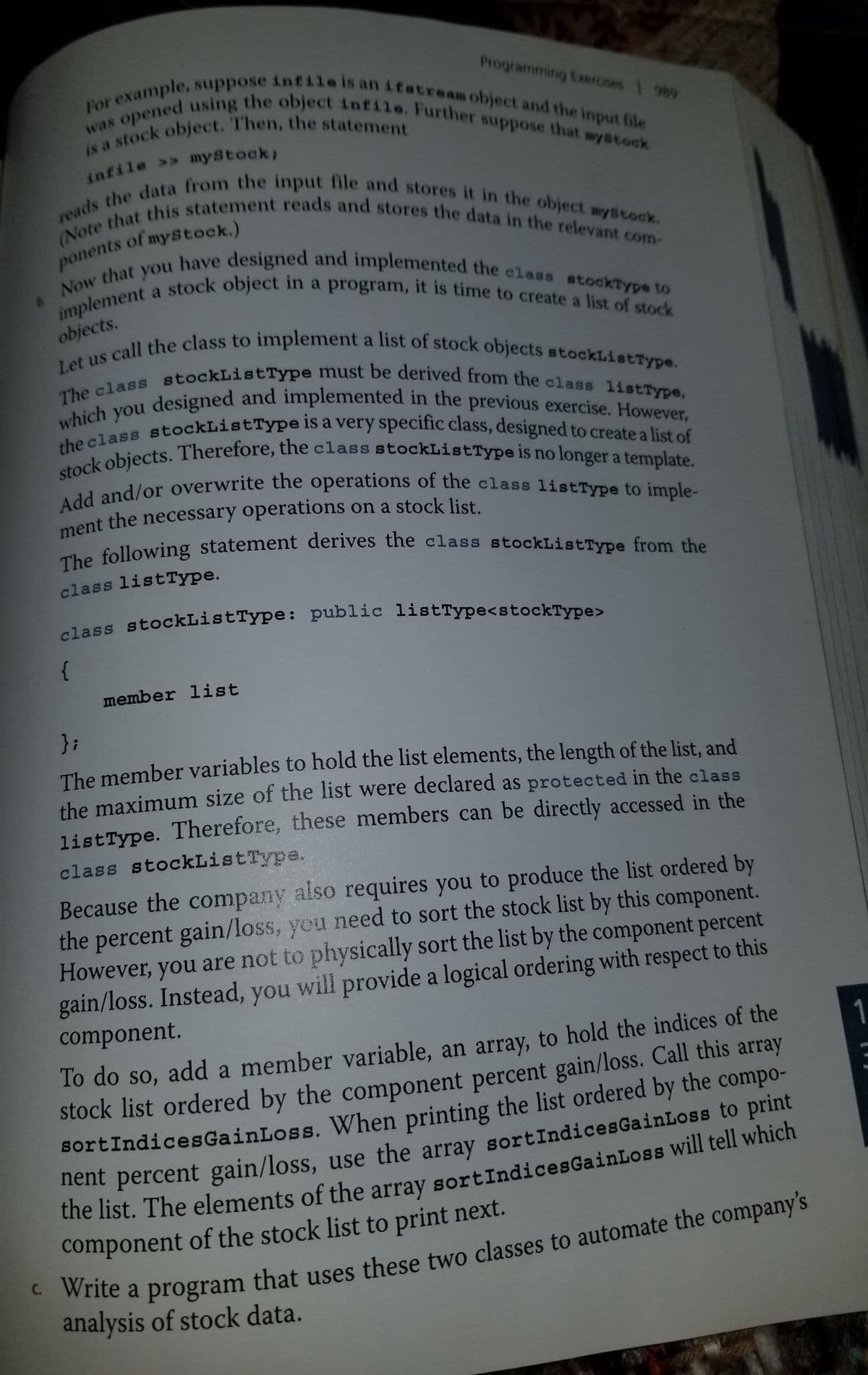Write a program to help a local stock trading company automate its systems. The company invests only in the stock market. At the end of each trading day, the company would like to generate and post the listing of its stocks so investors can see how their holdings performed that day. Assume the company invests in 10 different stocks. The desierd output is to produce two listings, one sorted by stock symbol and another sorted by percent gain from highest to lowest. The input data is provided in a file in the following format: symbol openingPrice closingPrice todayHigh todayLow prevClose volume. For example, the sample data is: MSMT 112.50 115.75 116.50 111.75 113.50 6723823 CBA 67.50 75.50 78.75 67.50 65.75 3782
Write a program to help a local stock trading company automate its systems. The company invests only in the stock market. At the end of each trading day, the company would like to generate and post the listing of its stocks so investors can see how their holdings performed that day. Assume the company invests in 10 different stocks. The desierd output is to produce two listings, one sorted by stock symbol and another sorted by percent gain from highest to lowest. The input data is provided in a file in the following format: symbol openingPrice closingPrice todayHigh todayLow prevClose volume. For example, the sample data is: MSMT 112.50 115.75 116.50 111.75 113.50 6723823
CBA 67.50 75.50 78.75 67.50 65.75 378233


Trending now
This is a popular solution!
Step by step
Solved in 3 steps with 9 images









